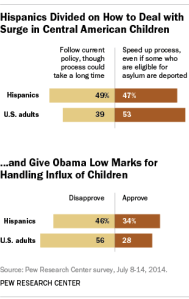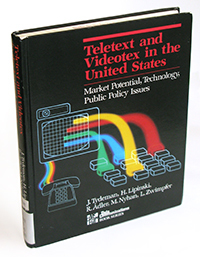

In a new Pew Research Center report, nearly 1,600 technology experts give their thoughts about how the “Internet of Things” — wearable computers, processor-embedded products and other digital advances — will alter society over the next decade. Many (though not all) of the experts foresee, in the words of the report, “a global, immersive, ambient networked computing environment” that will change the way we do everything from stocking our fridges to finding our soulmates.

Such predictive exercises have a long history, going back at least to H.G. Wells at the beginning of the 20th century. More than 30 years ago, the Institute for the Future, a Silicon Valley think tank, produced a book-length report on the development and potential impacts of electronic information technologies. What’s impressive is how much the report’s authors got right even though their fundamental assumption — that teletext and videotex, two nearly-forgotten platforms, would be in general use by the turn of the century — didn’t pan out.
Back in 1982, when the report was published, not only was the internet nonexistent but its ancestor, ARPANET, had fewer than 300 host computers, mostly at universities, government agencies and the military. At the time, many observers believed that teletext (one-way communication) and videotex (two-way), delivered to televisions or special-purpose terminals via telephone lines or coaxial cable, would be the main vehicles for bringing electronic information services to the masses.
The report’s authors predicted that by 1998, teletext/videotex services would have “relatively widespread penetration. It may not be in every home, but it is probably in a neighbor’s home, and you might be considering getting the service yourself.” People would use the services for messaging, finding information, shopping and remote monitoring, as well as basic computing. Despite the differences in technology, that’s not a bad description of how people use the internet. (And for the record, about a quarter of the U.S. population was online in 1998).
Even though videotex and teletext never took off the way the report’s authors thought they would (slow speeds and lack of common standards being the biggest obstacles), many of their projections will sound familiar:
- Blurring of lines separating work and home. “[M]uch more work is being done in the home than today. This work is primarily related to information production — and in particular to ‘creative knowledge’ activities — programmers, software writers, data analysts, information brokers, database managers, forecasters, planners…The person who works at home via an electronic system is not bound by the eight-to-five schedule that binds the person who must work with people or machines at a common site.”
- Fragmenting of traditional media. “[I]t is possible to custom design news bulletins limited to only those topics the average householder reads or is interested in. No longer is there any need to report news on a variety of subjects or to present information in an objective fashion.”
- Privacy concerns. “[A]t the same time that these systems will bring a greatly increased flow of information and services into the home, they will also carry a stream of information out of the home about the preferences and behavior of its occupants.”
- Data-based professions. “New skills and career paths associated with the management of information will emerge. These will range from information brokers who provide the ‘best’ deal on a used car to gatekeepers who monitor politicians and corporate activities and selectively release this information to interested parties.”
- Electronic banking. “The widespread availability of home banking on videotex could dramatically reduce the significance of branch locations….Economies of scale would suggest the emergence of national ‘super banks’ that are able to offer more services and lower changes to their customers.”
- On-demand media. “Digital sound recording has not only upgraded the quality of sound reproduction but has also created an on-demand music delivery service…Video technology is comparable.”
- New kinds of relationships. “Electronic home information systems…create classes of people based on interests, skills, and even specialized languages. As it becomes easier to link with various others of these classes, to establish relationships with members of these classes, to identify with them, ties with traditional peer group members may break down.”
Other predictions didn’t quite hit the mark, or at least haven’t yet become common:
- Electronic voting. “Where there is near universal penetration of videotex terminals…electronic referenda are regularly used for deciding routine problems….Electronic voting provides profiles of candidates in terms of their platform and record and allows voters to cast their ballots remotely.”
- Diversified politics. Citizens can “write their own electronic slates and find their own candidates. Videotex might mean the end of the two-party system as networks of voters band together to support a variety of slates — maybe hundreds of them.”
- Automated grocery shopping. “The in-home computer automatically orders two rolls of paper towels every week, a 25-pound bag of potatoes every other week, and vacuum cleaner bags every three months…[W]ith a little more intelligence, the same computer might also remember that the family [prefers brand-name towels], then makes itself a little rule about criteria for paper towels or any other product and ‘shops around’ to get the best deal.”
